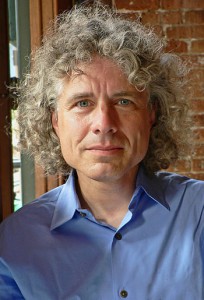Terrorism is evil. Murder is evil. Torture is evil. Hate crimes are evil. War is evil. Attempt to seriously understand why they happen, however, and one risks being accused of supporting evil.
On this blog I have attempted to share some insights of scholarly research into terrorism and the background to the Israeli-Palestinian conflict and have in consequence mistakenly been thought to be justifying terrorism, of being an apologist for Islam, of anti-semitism and of hatred towards Israel. All of those things are completely untrue but the accusations persist because some readers view my explanations as taking the evil-doer’s side.

Why does this happen? Steven Pinker offers a cogent explanation in The Better Angel of Our Nature:
Baumeister notes that in the attempt to understand harm-doing, the viewpoint of the scientist or scholar overlaps with the viewpoint of the perpetrator.
Both take a detached, amoral stance toward the harmful act. Both are contextualizers, always attentive to the complexities of the situation and how they contributed to the causation of the harm. And both believe that the harm is ultimately explicable.
The viewpoint of the moralist, in contrast, is the viewpoint of the victim. The harm is treated with reverence and awe. It continues to evoke sadness and anger long after it was perpetrated. And for all the feeble ratiocination we mortals throw at it, it remains a cosmic mystery, a manifestation of the irreducible and inexplicable existence of evil in the universe. Many chroniclers of the Holocaust consider it immoral even to try to explain it.
Pinker, Steven (2011-10-06). The Better Angels of Our Nature: The Decline of Violence In History And Its Causes (pp. 495-496). Penguin Books Ltd. Kindle Edition.
The Myth of Pure Evil
Baumeister, with psychological spectacles still affixed, calls this the myth of pure evil. The mindset that we adopt when we don moral spectacles is the mindset of the victim. Evil is the intentional and gratuitous infliction of harm for its own sake, perpetrated by a villain who is malevolent to the bone, inflicted on a victim who is innocent and good. The reason that this is a myth (when seen through psychological spectacles) is that evil in fact is perpetrated by people who are mostly ordinary, and who respond to their circumstances, including provocations by the victim, in ways they feel are reasonable and just.
The myth of pure evil gives rise to an archetype that is common in religions, horror movies, children’s literature, nationalist mythologies, and sensationalist news coverage. Continue reading “The Risks of Understanding and Explaining Evil”
